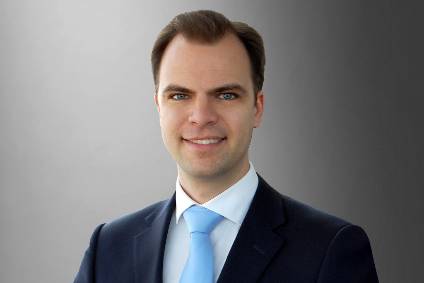
Faurecia is using this year’s Consumer Electronics Show to demonstrate its latest innovations for the Cockpit of the Future and Sustainable Mobility. Continuing our series of interviews at CES, we spoke to Alexander Van Laack, Director, Cockpit of the Future -North America, Faurecia, to learn more about its showcase and tomorrow’s cockpit.
Could you tell us the headline message that you would like to put out at the CES 2020?

Discover B2B Marketing That Performs
Combine business intelligence and editorial excellence to reach engaged professionals across 36 leading media platforms.
At CES 2020, Faurecia will reveal breakthrough technologies for the cockpit of the future and zero-emissions mobility. We will showcase exciting new demonstrators and test drive vehicles, including technologies from our recently created Business Group, Faurecia Clarion Electronics, our fuel cell joint venture with Michelin and our partnership with Microsoft.
How will the autonomous car change the look and feel of the cockpit?
At CES, our focus is not so much on the full autonomous vehicle, but rather vehicles that can transition and offer both experiences.
The autonomous cockpit will be an enabler to use your time better than today. The cockpit will be just another living space and it will be less focused on controlling vehicle functions. At CES, our focus is not so much on the full autonomous vehicle, but rather vehicles that can transition and offer both experiences. Entertainment, productivity and wellbeing will shape the use cases in the cockpit and that is what we are showing.
Could you tell us more about your Cockpit of the Future and where Clarion fits in?
Faurecia is already a leading tier 1 with seating and interior systems. This frames the cockpit of the future very well but with the integration of Clarion we able to cover the full intelligence that the cockpit of the future will require. Creating the FCE business group out of five acquisitions (Clarion, Parrot Automotive, Creo Dynamics, Cova, and Coagent) makes Faurecia the only Tier 1 who can truly deliver the full cockpit and therefore understand synergies and limitations that a single domain tier 1 would not be able to. Clarion is a perfect fit to the cockpit of the future.
In a truly autonomous car, the occupants are sitting in different places hence I guess that this needs a rethink on the ‘immersive sound experience’. What is Faurecia doing there?
Key for the immersive sound experience of Faurecia is an outstanding experience in any seat position. Making sure that every passenger is always his or her sweet spot is key and of course also to give each passenger as much comfort and privacy. Our personal audio zones use cross talk cancellation to create a much better separation between each passenger’s audio content. Active noise control will reduce unwanted exterior noise and allow a more relaxed experience overall.
Chinese tastes are increasingly influencing the design of cars driven not just in China, but around the world. How do you see that influencing the cockpit?
The Chinese market is a very important market for us and we have located part of our cockpit of the future team in China to understand the local consumer better and to closely work together with local OEMs.
In many ways Chinese customers are more demanding from a technology point of view. More displays, more functionality and a much higher focus on digital content. At the same time mobility itself is different than in many western countries. More often the person who pays for the ride or the car is a passenger and that also changes the expectations towards the interior.
How do you see electric vehicles influencing the design of the cockpit area?
From an architectural point of view, having an e-vehicle allows you to have a flat floor … offering more design freedom and movement in the car. You can imagine swivelling sweats or even rotations as you don’t have anything blocking you on the floor. The other point is, of course, that power consumption is more critical than before. When it comes to heating and cooling, a more localized climate bubble can save energy.
Increasing levels of electrification mean noises from the road or wind are more pronounced. Also, I guess that more use of thinner materials such as carbon fibre is making wind noise more prevalent. How is Faurecia addressing that through its acoustic technologies?
Faurecia has a long history focusing on material science and also passive noise-cancelling materials. We have a wide portfolio on lightweight materials for door panels, dashboards and of course lightweight seat structures. To cope with the noise, Faurecia has bought Creo dynamics, a leader in the space of ANC algorithm development. Through active noise control, we are able to reduce unwanted noise from the outside. This includes rolling noises that are currently masked by today’s combustion engines. As Faurecia has the understanding of the software ANC part as well as of the light material side, we can optimize the system for the highest efficiency.
Occupant comfort and individualisation are increasingly expected by motorists across all car segments today. We understand that Faurecia is working with Mahle on this. How do you see climate control requirements changing in the autonomous car?
The main difference we see is that the more automated a car will be the more the paradigm is changing. Today the driver is usually in control, but when there is no driver anymore, everybody will want to control their own experience. If you add on top the electrification, we have even the energy efficiency to consider. We partner with Mahle on thermal to achieve individual consumer zones. Why heat or cool the entire car, when you only have one passenger? Part of this is also the understanding of the passenger need state. Is he warm or cold? We use sensors to determine the state of each passenger and then use our domain controller to act appropriately.






